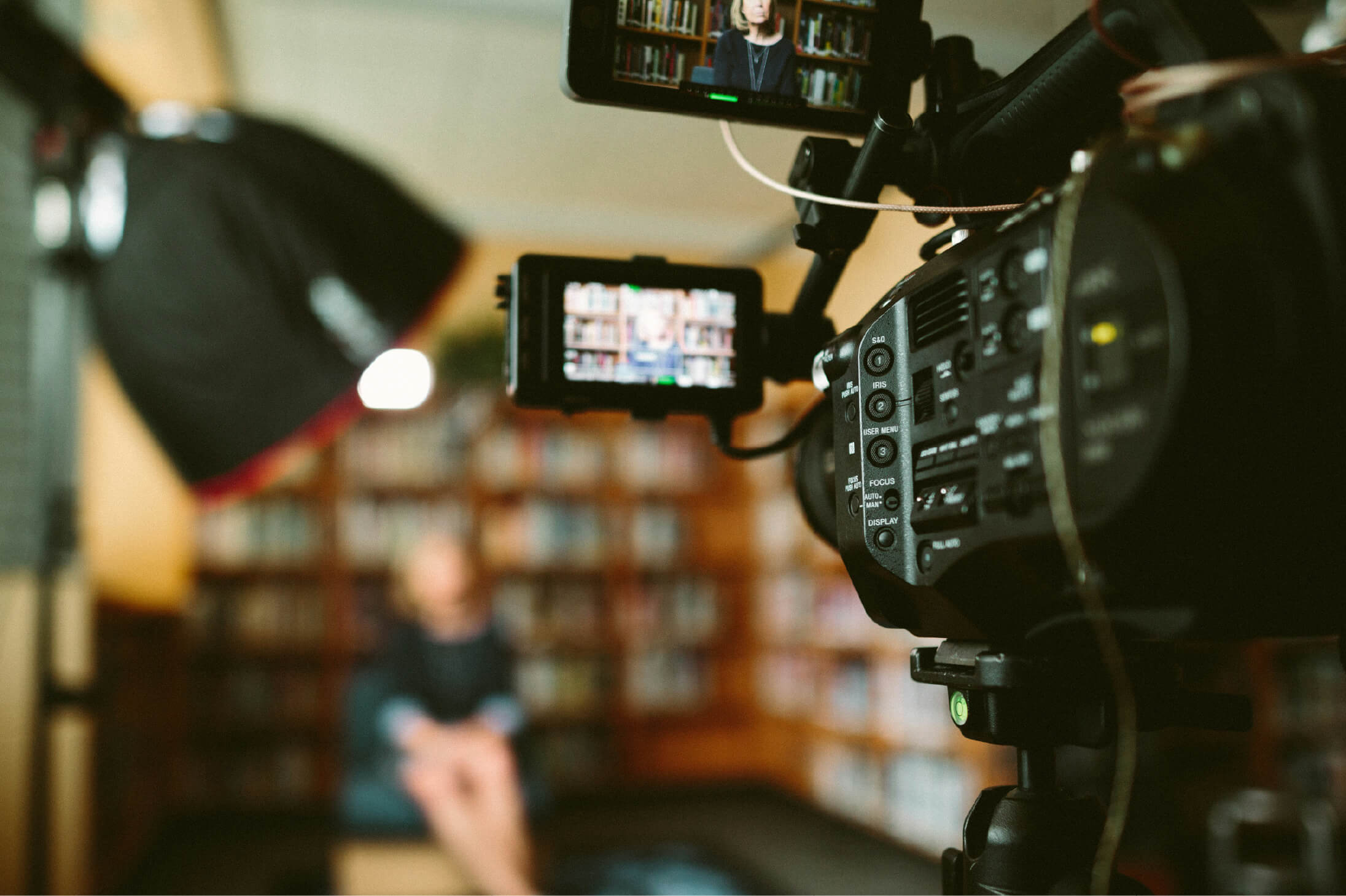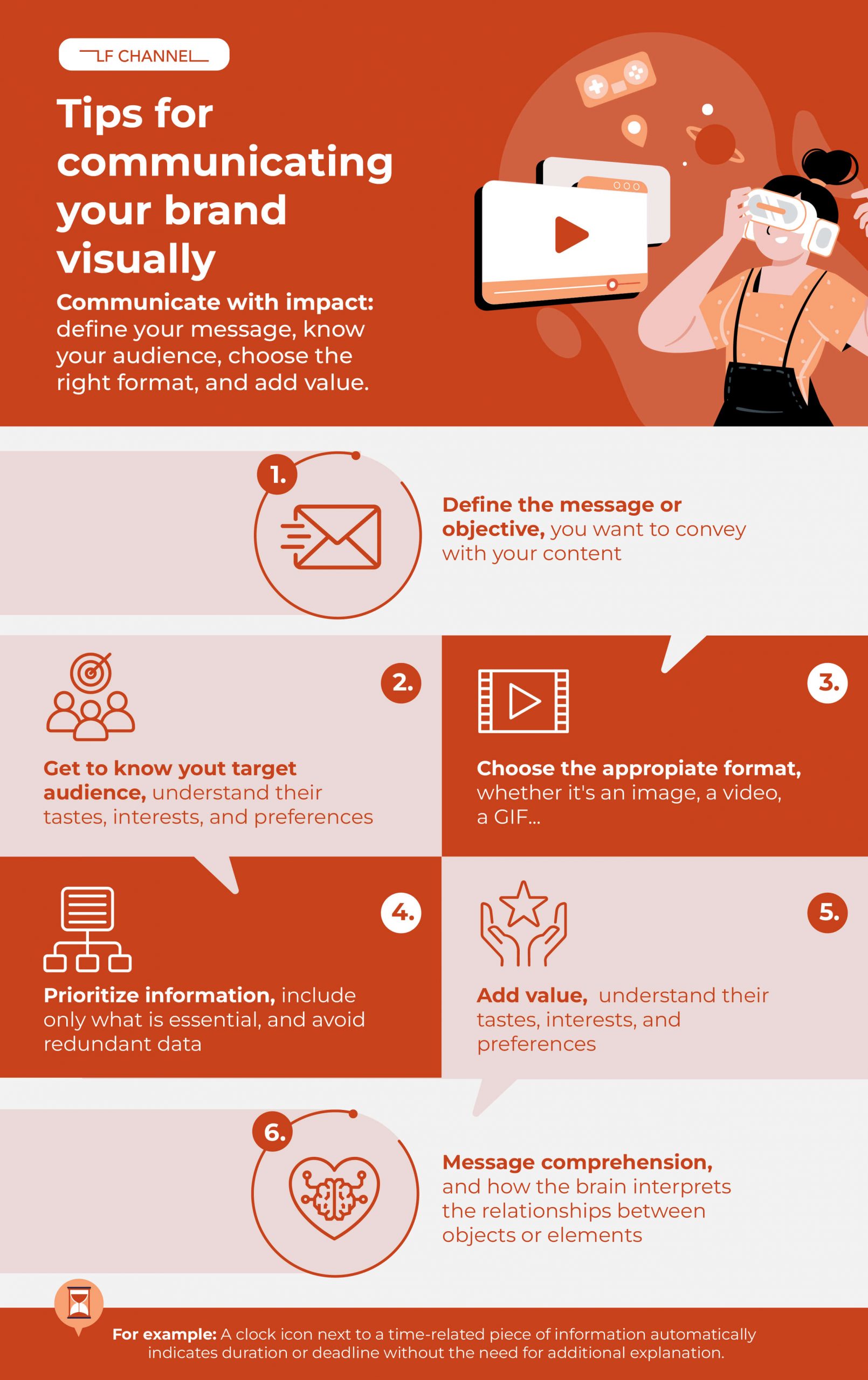What generates more interest for the audience: a press release describing a corporate event or a high-quality photo gallery that tells the story of the event? In a world saturated with information, visual communication doesn’t just tell stories—it makes them memorable.
Storytelling defines the brand’s narrative, and visual communication ensures its consistency across all touchpoints. Thus, the essence and values that define the brand are reflected in every piece: from website design to advertising campaigns and social media content, achieving a coherent and distinctive identity.
In public relations, visual communication is the brand’s calling card to the world: it ensures the message is clearly understood and captures the attention of the media. This is because we process visual information much faster and remember images better than words. Additionally, good design can break down linguistic and cultural barriers, allowing the brand’s message to reach wider audiences.
The power of visual communication: what it is and how it impacts
Visual communication conveys information through elements we perceive with our eyes: colors, images, logos, typography, products, graphics, or videos. It constantly surrounds us, visual communication is present in traffic signs, the emoticons in our conversations, and advertising posters. Its power lies in making messages easier to understand without the need for words.
In public relations, understanding how this language works is key: it allows for designing strategies that directly impact brand perception and recognition.
Connecting with your audience
Visual communication creates an authentic connection with the people receiving the message. To achieve this, it is essential to understand their needs, interests, and how they consume content. Adapting channels and formats according to the audience ensures the message arrives clearly and effectively, strengthening the relationship with both the public and the media.
The same applies to relationships with the media; listening to their feedback helps refine future public relations actions, maintain message consistency, and ensure each communication has maximum impact.

Consistency in communication
Maintaining a strong visual identity projects professionalism and trust. Visual communication goes beyond aesthetics: it conveys personality, values, and strategic messages.
Each element should have a purpose, applying design principles and understanding how we perceive images, to focus the audience’s attention on what’s important. A consistent visual strategy strengthens the image, facilitates connection with the media, and increases the impact of press releases, including video press releases.
When this consistency is lost, credibility also deteriorates, a critical factor in public relations where public perception defines reputation and trust.
Tips for visually communicating your brand
Communication can influence the public’s decisions by presenting information convincingly. To achieve this, it’s key to define the message, know your audience, choose the right format, and provide value in every piece.
Here are some tips to keep in mind before creating visual communication content:
- Clearly define the message you want to convey with your content and its objective. From there, you can decide which format best suits your needs.
- Know your target audience. It’s essential to understand their tastes, interests, preferences, and how they consume content in order to connect with them effectively.
- Choose the right format. Whether it’s an image, video, infographic, chart, or GIF, the format should suit both the message and the audience.
- Simplify and prioritize the information. Include only what’s essential and avoid redundant data. Keep the focus on the main idea you want to communicate.
- Provide value. Your content should offer something different, useful, or interesting that creates a positive impact on your audience.
- Message comprehension. Our brain is pre-wired to interpret relationships between objects or elements, allowing for instant understanding. For this reason, it’s important to grasp these connections so the message is understood quickly and clearly.
For example: An icon of a clock next to a time-related data point automatically indicates duration or deadline without needing any extra explanation.

The importance of having a good visual strategy in public relations
In the world of media, visual content attracts, communicates, and convinces. A press release or news note accompanied by high-quality images or videos:
- Reinforces the message being conveyed.
- Makes it easier for journalists to understand.
- Increases impact and strengthens reputation among audiences and specialized media.
Therefore, good design organizes information so it can be easily understood at a glance. From graphics to videos, a visual strategy enables journalists and the public to quickly grasp key points, avoiding confusion and optimizing message dissemination.
How to capture the attention of journalists and media
In a sea of press releases, capturing journalists’ attention requires more than just good words: visual presentation is key. Every image, graphic, or clip can make the difference between being ignored or becoming news.
To achieve this, it’s important that each asset serves a purpose: thumbnails that summarize the news, short clips showcasing key products or processes, and graphics highlighting important figures. Additionally, organizing information hierarchically and coherently helps journalists grasp the message at a glance, optimizing their time and increasing the likelihood of publication.
What are video press releases?
A video press release is an audiovisual material that complements traditional press notes. It can include interviews, product demonstrations, animated graphics, or images that support the data. It is produced with ease of use for the media in mind, respecting their style and informational values, and many agencies collaborate with journalists and cameramen to ensure its quality and publication.
How can video press releases help integrate corporate messages?
This format simplifies complex messages through images, graphics, and testimonials, making the information more accessible and memorable. Additionally, it can be distributed across various channels—traditional media, social networks, newsletters, or websites—ensuring message consistency and maximizing its reach.
Want to know how we have achieved successful campaigns thanks to creating a visual identity tied to a communication plan? Contact us, we would be happy to help you.
